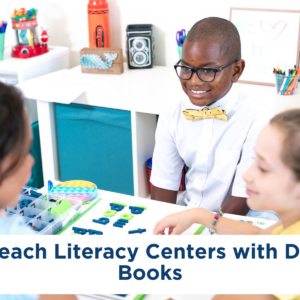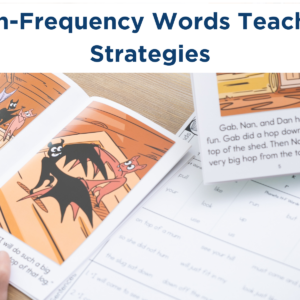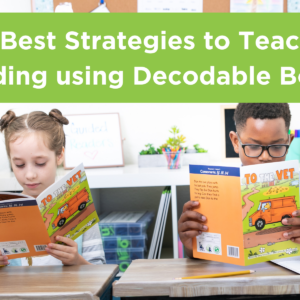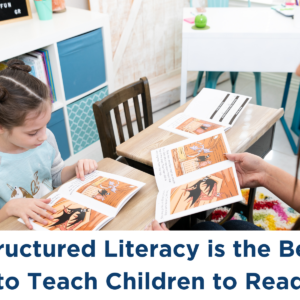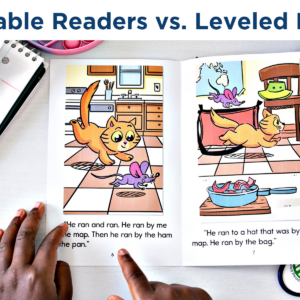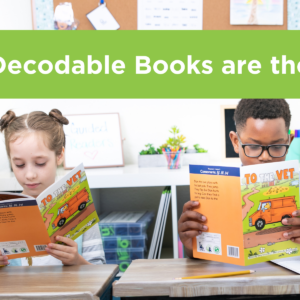Shame on you, teachers. This is the trendy narrative these days. I don’t know why, but it is. And I’ve had enough of it.
The messages on my blog and YouTube channel have always been about helping teachers and helping students learn. It will continue to be that way because I’m trying to provide teachers with strategies and tactics to help improve their craft. It’s always been my mission and what I’ve been about.
But this narrative that’s happening online has become so troubling for me that I decided I wanted to take action to change it. I want to be the positive voice and person behind what’s happening online and in the education world. There has been a ton of press, discussion, animosity, and anger lately about reading instruction and how it’s failing our children.
I want to address this while helping teachers and students. That’s my goal.
Background on the current narrative
There are two resources I encourage you to listen to and read that provide more information on the narrative happening in the education world online.
The first is a podcast series called Sold a Story. The journalist who recorded it has some amazing points and opinions about how reading has been taught in schools and how we were “sold a story” on how children learn to read. There were parts of this podcast I absolutely agreed with, and of course, there were parts I felt uneasy about.
The second resource is the article “At a Loss for Words.” This article is about the reading wars which have been happening in education for a couple of years but is really starting to infiltrate the online education world.
I encourage you to check out these resources because the more education we have, the better educators and parents we become for helping children.
What to expect from this blog series
After hearing so much of the existing “shame on teachers” narrative, I felt it necessary to address it and share how I will be a positive force amid online animosity. So that’s what this blog series will be about. My goal has been and will continue to be, to help teachers teach ALL of their students.
This blog series aims to help you start thinking about the Science of Reading and Structured Literacy. And not just think about it, but methodically bring it into your classroom so you don’t feel overwhelmed.
Incorporating structured literacy shouldn’t have to be overwhelming. I want us to push past the “this is harming children” and “we need to throw this out now” mentality and explore how to make the necessary changes realistically.
We should address the Science of Reading that is at the forefront of how we should be teaching children to read. I want to help you learn about it and make small shifts in your classroom to help your students become amazing readers who love to read.
The arguing needs to stop
I’ve been in education for almost 30 years and watched the pendulum swing back and forth on reading instruction. And it’s something we need to address because we’re not teaching children how to read effectively.
So let’s look at and listen to the research together. Let’s stop arguing online because we’re trying to defend what we’ve done for so many years. And instead, let’s figure out together how we can best implement these practices in our classrooms based on scientific research and how the brain learns to read.
That’s my goal with this new blog series. I want to help you make small incremental shifts in your teaching and instructional practices to ease you into changing how you do things in the classroom.
I was a balanced literacy teacher my entire career. When I started teaching, it was heavily based on phonics and isolated skills. Then I moved into another district where it was focused on whole language instruction. Then it morphed into balanced literacy.
But it appears that for many, balanced literacy has become synonymous with the three-cueing system, and I disagree. While I think the three-cueing system promotes children to guess at words they don’t know, balanced literacy is much more than that. I believe it’s about creating a literate classroom environment full of wonderful books, read-aloud time, writing, and sharing.
So, it’s time for us to start looking at our practice to identify the parts of balanced literacy not to throw out while considering the research behind the science. Then, we can restructure our teaching methodologies and approaches to align with the research. This upcoming blog series will share specific ways to make small shifts in your instruction to align with the Science of Reading until you’re ready to go all-in.
Change takes time
The belief that teachers are harming students if they don’t throw out their leveled readers and change everything in the classroom is wearing on me. That is not how real life works.
Change must be incremental to stick. To get buy-in, we must make small, feasible changes that don’t overwhelm teachers because they’re already overwhelmed. And that’s what this blog series will help you do—make incremental changes in your instructional practices without feeling overwhelmed.
My teaching, instruction, blog, and YouTube channel are safe spaces. I’m tired of the narrative of who’s to blame: Teachers are to blame. The administration is to blame. Curriculum creators are to blame. Corporate curriculum companies are to blame. The government is to blame.
That’s the problem. We need to forget the blame game and stop arguing online because it’s not productive and not good for our mental health.
Let’s get productive, be intentional and start making small shifts in our teaching to align with the science and get all our students to read. And we do that through making incremental changes and focusing on the science.
What you can expect
Throughout this blog series, I’ll give you specific, small shifts you can make in your instruction until you’re ready to go all-in with structured literacy. So, please join in and block out the noise you hear online.
Stop trying to defend yourself. I will also stop because I’m tired of it, and it’s not good for our mental health. We need to think about the most important thing: the children.
Our students must be first and foremost on the top of our list. We must address that one-third of fourth graders can’t read or are way below grade level. So, let’s start doing it together.
I’m with you and here to support you in this transition of moving toward scientific research on how the brain learns to read and how you can incorporate those instructional practices in your classroom.
I hope you join me for this blog series on how to make small changes in our classrooms to ensure we’re doing what’s best for our students. This will always be a non-judgment zone.
Thank you for everything you do for your students in your classroom each and every day.


